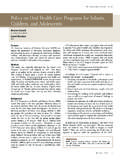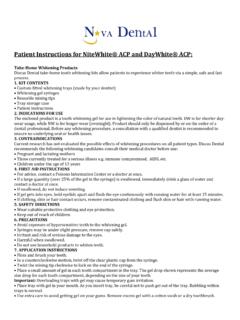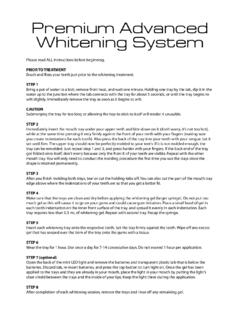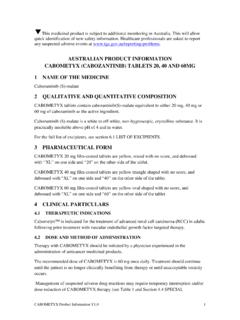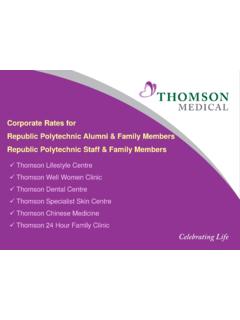Transcription of FAST FACTS - aapd.org
1 2013 FAST FACTS FAST FACTS AMERICAN ACADEMY OF PEDIATRIC DENTISTRY 2014 Twelve Great Story Ideas 1. Dental Care for the Baby ONE dental visit when there s ONE tooth can equal ZERO cavities. 2. Cosmetic and Restorative Dentistry New treatments to enhance or restore a child s smile. Half of American children get cavities Learn best treatment choices for children . 3. Behavior Guidance Parents should exercise important rights as partners in dental decisions.
2 4. Diet and Dental Health It s not what children eat, but how often, and candy can be OK if children are conscientious. 5. Fluoride Fluoride not only helps prevent tooth decay, it cures beginning cavities. 6. How to Select a Dentist How pediatric dentists are different from general dentists. 7. Dental Care for the Preschooler Tips for parents on a great dental visit. 8. Dental Care for School-Age children & Sealants A count down to dental health: Five steps to a cavity-free child.
3 Sealants: The invisible protector and the best-kept secret in the dental office. 9. Dental Care for the Teenager Why teens may get their first cavity at the same time they get a driver s license. 10. children at Risk Twenty-five percent of our nation s children have 80 percent of the cavities. 11. Dental Care for Special-Needs children & Adults Every person can enjoy a healthy smile and benefit from preventive dentistry. 12. Sports Safety & Dental Emergency How to keep children off the injured list. What to do when a child has had a tooth knocked out.
4 The American Academy of Pediatric Dentistry (AAPD), founded in 1947, is an organization of more than 8,000 dedicated professionals with special training in children s oral health. Pediatric dentists and their staff work in a pediatric environment because they enjoy working with children . Pediatric dentists are advocates for children . The Academy emphasizes a three-part approach to caring for children : 1. Prevention & Treatment: treating infants, children and adolescents in the dental office 2. Education: teaching children , parents and dental professionals about how to provide the best possible care 3.
5 Research: working to develop improved methods of preventing oral problems Pediatric dentistry is one of nine dental specialties recognized by the American Dental Association. Pediatric dentists are the pediatricians of dentistry. They provide both primary and specialized oral health care for infants and children through adolescence, including those with special health care needs. Their professional education includes two to three years of specialized study after completing dental school. 2013 FAST FACTS DENTAL CARE FOR YOUR BABY STORY IDEAS When does one plus one equal zero?
6 ONE baby tooth + ONE pediatric dental visit = ZERO cavities. First dental visits are mostly educational. The AAPD recommends that every child visit the dentist by the child's first birthday. The American Dental Association and the American Academy of Pediatrics recommend a child visit the dentist by age one as well. This well baby check for the teeth can establish a dental home and helps ensure that parents learn the tools they'll need to help their children remain cavity-free. A 2006 scientific paper in Pediatric Dentistry revealed that children who waited past their first birthday and did not see a dentist until age two or three "were more likely to have subsequent preventive, restorative and emergency visits.
7 " Pacifier or thumb? Cloth or disposable? Breast milk or formula? Debates rage around new parents, just at a time when they re too tired to tie their own shoes. The AAPD solves the first of these parent dilemmas with a vote for pacifiers over thumbs to comfort fretful babies. Babies can catch cavities from their caregivers. In 71 percent of the cases, the mother is the source. Research indicates that the cavity-causing bacteria known as Streptococcus mutans can be transmitted from mothers to infants even before teeth erupt. The better the mother s oral health, the less the chance the baby will have problems.
8 GREAT QUOTES A child should be seen by a pediatric dentist, no matter how young that child is, if the parent thinks there could be a dental problem. No child is too young for good dental health. --Dr. Ross Wezmar, Pediatric Dentist, Scranton, Pa. Pacifiers have a few rules of thumb, pun intended. The three things to consider are frequency (How often do they suck?); duration (How long do they suck?); and intensity (Can you hear it across the room?). --Dr. Arthur J. Nowak, Pediatric Dentist, Iowa City, Iowa PARENT TIPS: HEALTHY TEETH FOR BABIES Before the teeth erupt, clean the baby s mouth and gums with a soft cloth or infant toothbrush at bath time.
9 This helps ready the baby for the teeth cleaning to come. When the teeth erupt, clean the child s teeth at least twice a day with a toothbrush designed for small children . Take the baby to see a pediatric dentist by the baby s first birthday. The earlier the visit, the better. It is important to establish a dental home to ensure that the child s oral health care is delivered in a comprehensive, ongoing, accessible, coordinated and family-centered way by the dentist. If the baby is placed to sleep with a bottle, use nothing but water.
10 When a child is given a bottle containing sugary liquids such as milk, formula or fruit juice, the teeth are under attack by bacterial acid for extended periods. This can cause cavities in babies called early childhood caries, formerly known as baby bottle tooth decay. Breast-feeding has been shown to be beneficial for a baby s health and development. However, if the child prefers to be breast-fed often or for long periods once a tooth appears and other foods/beverages have been introduced into her diet, she is at risk for severe tooth decay.




